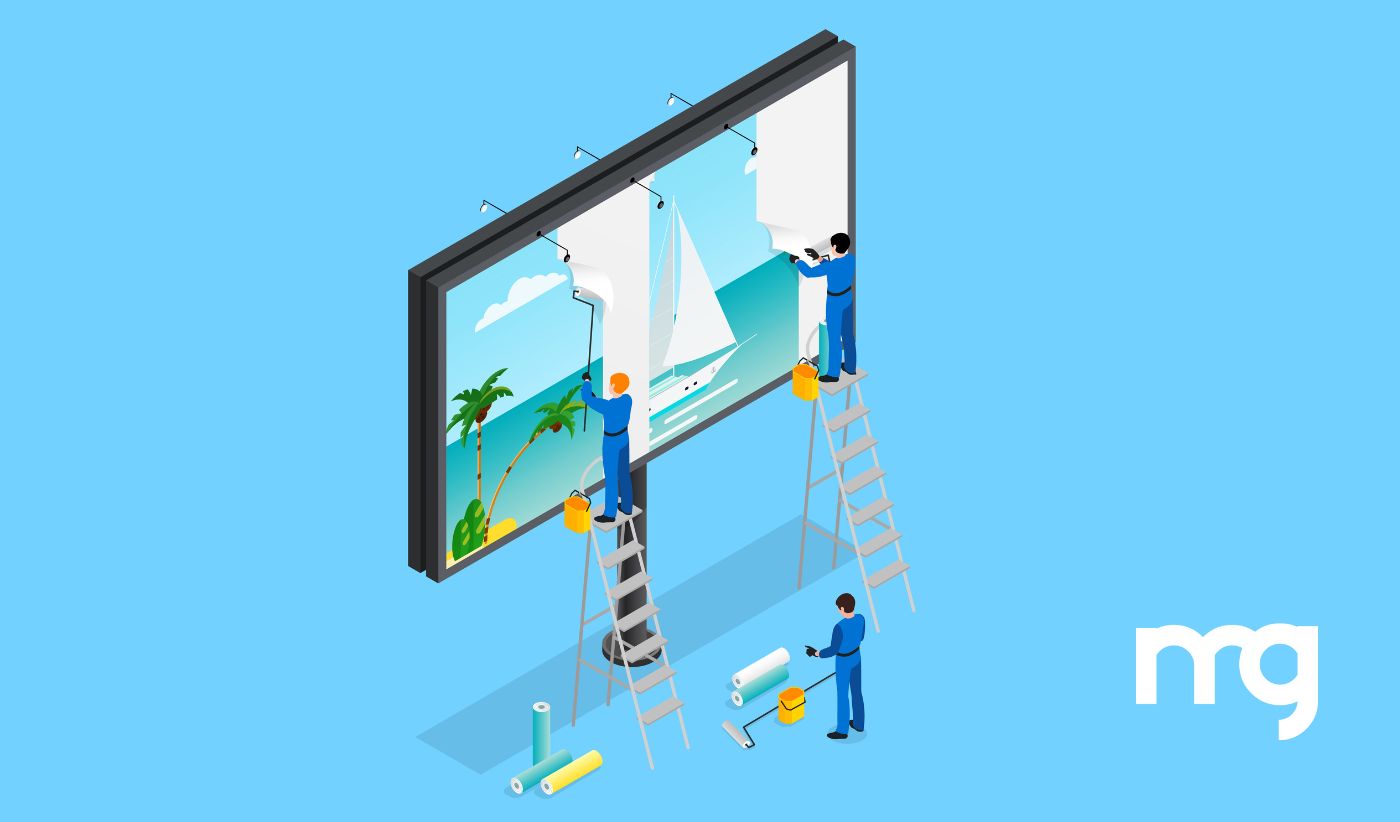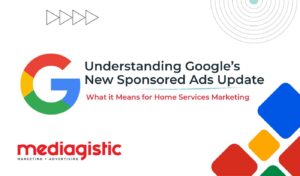
The Fall and Rise of OOH Advertising
When the goal is to make a lasting impression on potential customers, it’s hard to ignore the impact that out-of-home (OOH) advertising can have. OOH has long been an effective way to build additional brand equity and visibility at a local level, and its influence has remained strong throughout the years.
However, OOH advertising has experienced some distinct ebbs and flows over its decades-long tenure – technically taking off with outdoor billboards in the 1920s before more recently going through an evolutionary process that started around 2010. In this article, we’ll explore its successes and failures, and take a look at where this form of media is headed.
How Does OOH Advertising Work?
OOH advertising utilizes physical media like billboards, subway ads, bus shelters, or other forms of signage to reach potential customers.
It is usually used in areas with large foot traffic, such as shopping malls or busy streets. Billboard advertising can reach consumers who may not be accessible through traditional digital channels such as social media or search engine marketing (SEM).
The Fall of Billboard Advertising
Out-of-home (OOH) advertising has long been a popular method of reaching customers, as around 80% of Americans notice billboards and engage with them in some capacity.
The COVID-19 pandemic, however, decreased the global revenue for OOH advertising by 13.3% in 2020. This statistic concerned businesses and marketers relying on OOH advertising, so what factors contributed to its slow pace?
Let’s dive into some of the reasons why the pandemic led to a fall of OOH advertising:
The Impact of Social Distancing Measures
One major factor in the decline of OOH advertising is the social distancing measures that have been put in place worldwide. Fewer people are out and about, so there are fewer eyes to see billboards, posters, and other forms of OOH advertising. Since the pandemic canceled the 2020 Summer Tokyo Olympics, it has led to customers spending 6.2% less time on OOH media. As a result, companies that invested in OOH advertisements like HVAC ads, vehicle decals, etc., saw a steep decline in their revenue.
The Shift Toward Digital Out of Home (DOOH) Advertising
Another reason traditional OOH advertising slowed in 2022 was the shift toward digital OOH (DOOH) advertising. As we started spending more time online, companies began investing more in digital marketing tactics such as search engine optimization (SEO), pay-per-click (PPC) campaigns, and social media marketing instead of traditional OOH campaigns. Although according to a 2020 study, 57% of people said they interact with mobile digital billboards, the overall impact was still lesser than the previous year.
The Rise of OOH Advertising
Once the major wave of pandemic quarantines had finished and people began commuting to work more often, billboard marketing started getting more traction, and the era of its rise began. It is predicted to grow by 9%, with digital out-of-home media (DOOH) contributing an additional 6.3%.
OOH campaigns generally have higher recall rates than other media, such as television or radio advertisements. According to research, OOH and DOOH campaigns have an average recall rate of 40% and 47%, respectively, which is impressive for businesses that thrive on public engagement. Also, according to recent studies, 77% of people say they are noticing their surroundings 40% more often, making OOH advertising an effective means of engaging potential customers.
With the rise of digital out-of-home media (DOOH), advertisers can utilize sophisticated targeting capabilities and analytics tools. This means that DOOH campaigns can be tailored specifically for each audience segment, allowing advertisers to ensure their messages reach the right people at the right time.
As we move into 2023 and beyond, OOH advertising will continue its upward trajectory due to its cost-effectiveness. Additionally, with continued advancements in DOOH technology, advertisers can leverage even more sophisticated targeting capabilities, which will help them reach more potential customers, be it the entertainment niche or HVAC marketing.
How Are Companies Utilizing OOH and DOOH Advertising Post-Pandemic?
As people begin to emerge from the restrictions imposed by the pandemic, companies are focusing on creative ways to reach out to consumers utilizing billboard advertising. Let’s take a look at how companies are molding their ways to meet the current trends:
Creative Ads that Reflect the Joy of Finally Leaving Home
One way companies have been utilizing OOH advertising post-pandemic is by creating emotionally charged ads that reflect the joy of finally being able to leave home. For example, McDonald’s has launched several ads along the lines of “It’s time to reconnect”—a sentiment that resonates with everyone who has been through a period of social isolation. Other companies have also created similarly powerful ads highlighting the joys of finally being able to go out safely again.Transitioning To DOOH Advertising Solutions
Another trend emerging in OOH advertising post-pandemic is transitioning from traditional media such as billboards and bus stops to digital out-of-home (DOOH) solutions like video walls, kiosks, and virtual reality installations. These new technologies offer businesses more flexibility in targeting specific audiences and delivering interactive experiences. For example, Starbucks recently launched an interactive DOOH campaign where customers could order drinks using their smartphones while waiting at bus stops or train stations. This campaign allows Starbucks to engage its target audience in real time while offering an enjoyable experience for those waiting for their train or bus ride home.
Take Advantage of OOH and DOOH Advertising Solutions
As we look toward a post-pandemic future, one thing is clear; companies are utilizing creative mass OOH advertising strategies that speak directly to their audience’s current feelings about leaving home. From using creative messaging to altering their campaigns to suit digital formats for greater flexibility and precision targeting, a lot is changing. With these changes in place now, it will be interesting to see how brands may further innovate their OOH advertising strategies post-pandemic.
Want to learn more about what impact DOOH and OOH advertising could have for your brand? With Mediagistic’s OOH and DOOH advertising solutions, our team can strategically identify which audiences are the right fit for your message and leverage high-value placement capabilities to reach your target customers at the right time and place across multiple channels.

Alexa Sweetman is a Media Associate at Mediagistic in sunny Tampa, FL. Every day, she analyzes budgets, target audiences, and effectiveness to assist in building major media schedules. Some fun facts about Alexa: 1) She LOVES to bake (cupcakes are her specialty), 2) She’s lived in 4 US States and 3) A life goal of hers is to create something that changes the world. Connect with her on Linkedin.
Image by macrovector via freepik
You May Also Like

Google’s “Have AI Get Prices” Feature: Rewriting Local Search for HVAC & Home Services
December 15, 2025In recent months, Google has quietly rolled out a major update to local search with its new “Have AI Get Prices” functionality,… Continue Reading Google’s “Have AI Get Prices” Feature: Rewriting Local Search for HVAC & Home Services…

Mediagistic Announces Strategic Partnership with EGIA to Deliver Enhanced Marketing Solutions for Home Services Contractors
November 10, 2025Tampa, FL – Mediagistic, a full-service marketing and advertising agency specializing in contractors and service-based businesses, today announced a strategic partnership with… Continue Reading Mediagistic Announces Strategic Partnership with EGIA to Deliver Enhanced Marketing Solutions for Home Services Contractors…

Understanding Google’s Sponsored Results Update: What it Means for Home Services Marketing
October 20, 2025Google is once again reshaping how paid ads appear in search results, and this change (called the Google Sponsored Results Update) could… Continue Reading Understanding Google’s Sponsored Results Update: What it Means for Home Services Marketing…